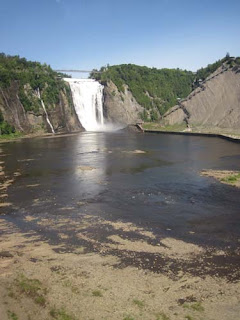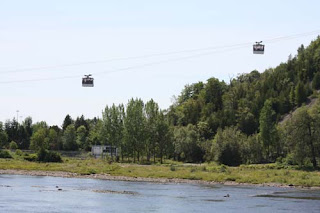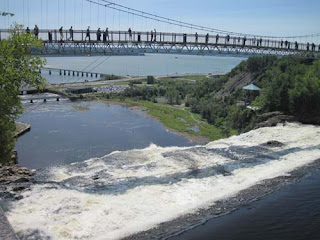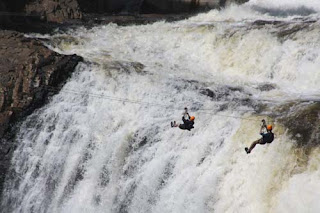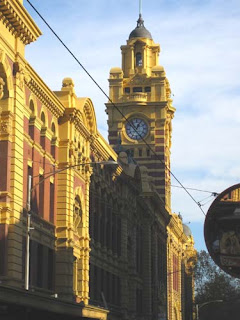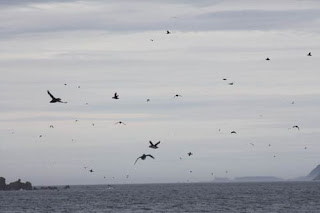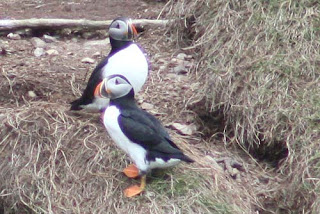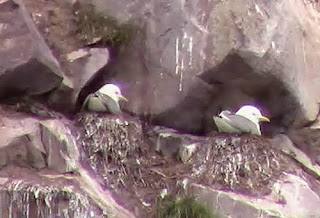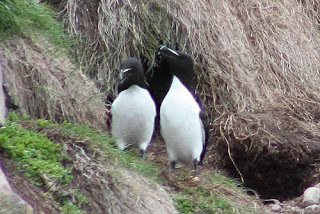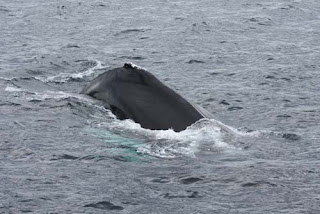Location: Bay Bulls, Newfoundland, Canada
Address: 90 Northside Rd
Date: June 2017
Website: gatheralls.com
People go to Newfoundland for many reasons. Three popular reasons are puffins, whales and icebergs. If your timing is right you can arrive in Newfoundland right when all three seasons cross. Iceberg season usually peaks in May. The birds returning from the sea reach their peak in July and the whale population peaks just after that. Between June and July if you are lucky you can catch the triple play.
We took a boat tour with Gatherall's based out of Bay Bulls, Newfoundland. Bay Bulls is the closest port to Witless Bay. We had hoped to see the triple play while in Newfoundland and we hit a home run on our first outing. The first thing you will see along the coast is the huge cliffs and rocks revealing their layers of history as they jut out into the sea.
THE BIRDS
We spent a great deal of time admiring the cliffs, but what we came for was the wildlife.
Before our boat tour had even begun we were treated to northern gannets flying by. These birds have a long sleek body that changes from white to yellow near their head. They have bright blue eyes.
Gannets will fly high over the water and when they spot a fish they will dive bomb straight down and capture their prey. In order to do this they have special adaptations so that they do not get a concussion when entering the water. Their nostrils are located inside their beak instead of on the exterior and more importantly, they have special air pockets in their heads and chest which reduce the impact as they hit the surface of the water.
As the boat moved further along the coast, we were treated to a bald eagle soaring overhead. Our guide also pointed out some black guillemot and we managed to catch a glimpse as they hurried past. Black guillemot are black birds with red legs and a white patch on their wings.
The Witless Bay Ecological Reserve is made up of four islands. They are Gull, Great, Green and Pee Pee. During breeding season there could be well over a million birds in the area. We were headed to Gull Island and as we drew closer the birds made their presence known. Soon the sky was filled with little black dots as if a swarm of bugs surrounded us. Everywhere you looked birds were landing in the water or flying back and forth from the island they call home.
On Gull Island the birds crowd in for space. The common murre (above) were packed very tight for space and breeding season had not yet reached its peak. As one may expect from so many birds in such a tight space there is a lot of waste and yes we could smell it. They don't waste space but waste in their space. The murre lay eggs which are very pointy as this allows the bulkier end of the egg to stay up and out the build-up on the cliff face.
There are over 260,000 puffins that spend almost their entire year at sea and only return here for overcrowded breeding.
Immature puffins will not return for several years after birth until they are able to breed themselves. The puffin has a distinctive colourful beak and puffy cheeks which make it the favourite bird on the tour.
Other birds included the black-legged kittiwake which looks very similar to a regular seagull. Seagulls normally have pink or yellow legs so if you see a seagull with black ones, it is probably a kittiwake.
Common murre are also know as common guillemot. The breeding plumage around their eyes makes it look as if they are wearing glasses. One would image that with thousands of almost identical birds on the cliffs, the process of finding your mate when you return would require all of your senses.
Razorbills are also black and white, but have a white line along their beak. The razorbills seemed to be far out numbered by the puffins and murres of Gull Island.
THE WHALES
As we spent our time watching little birds fly over our heads, the whales did not want to be forgotten. A white shadow beneath the surface passed under the boat.
A humpback whale took a breath and then dove back down below the surface.
As the boat headed into the bay a smaller minke whale also made a brief appearance.
THE ICE
While ducking the little birds of Gull Island we saw something floating in the distance.
This was an iceberg that had likely travelled from Greenland to wind its way around Newfoundland. It has been slowly melting the whole time as it made its journey.
The blue veins would be filled with pure glacial water and made a beautiful pattern across the berg. Now we had seen it all. After enjoying the natural beauty, the only thing left to do was be screeched in. A soggy foot, a wet puffin doll in the face and a mouth full of rum later and we were now true Newfoundlanders.
Map of Our World
 Gatherall's Puffin & Whale Watch
Gatherall's Puffin & Whale Watch ,
Witless Bay
Post # 207
 Montmorency Falls
Montmorency Falls
